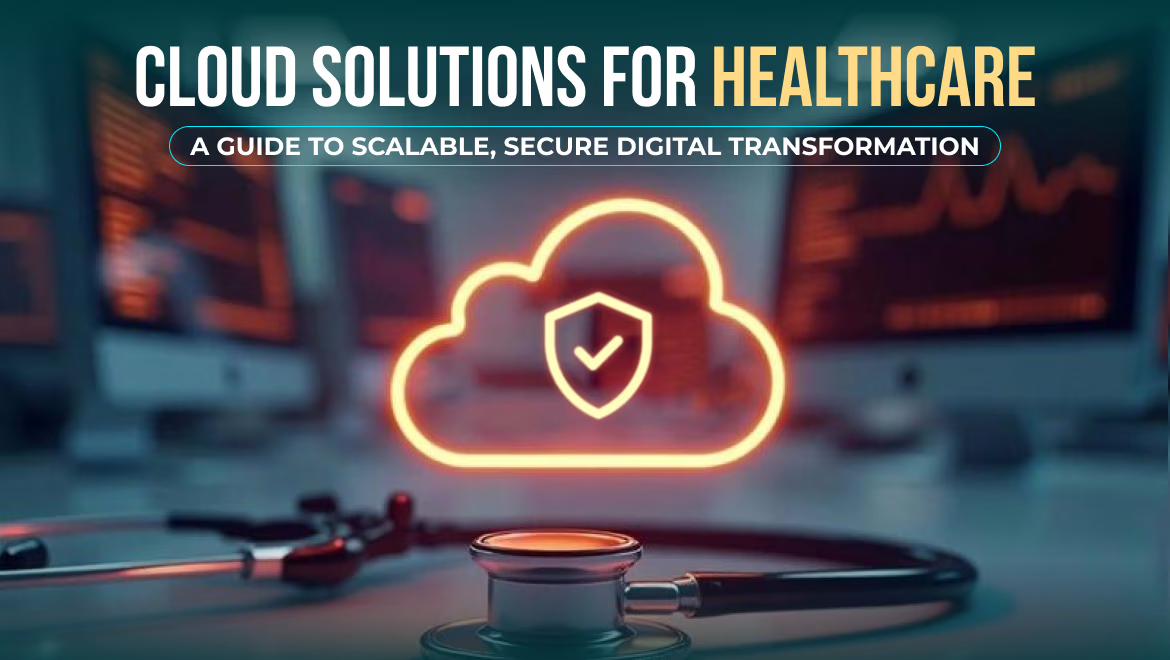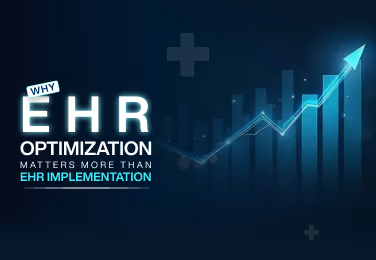

- By Admin
- 07 July, 2025
- 8 min Read
Cloud Solutions for Healthcare: A Guide to Scalable, Secure Digital Transformation
Cloud computing is not just reshaping healthcare IT—it's redefining how care is delivered, coordinated, and scaled. As patient expectations shift toward digital-first experiences and regulations tighten around data security, healthcare providers and innovators alike are looking to the cloud for answers.
This guide breaks down the critical questions every healthcare organization must ask when exploring cloud migration consulting services and cloud-native application development.
Who Needs Cloud Solutions in Healthcare?
The need for modern, scalable infrastructure cuts across the healthcare ecosystem. Cloud solutions serve a wide range of stakeholders:
For example:
- Hospitals and health systems seeking cost-effective digital transformation
- Healthtech startups building next-generation care delivery tools
- Multi-specialty networks coordinating complex, remote care
- Clinical researchers managing large-scale datasets and AI workflows
According to the Healthcare Information and Management Systems Society (HIMSS), over 80% of healthcare organizations are either deploying or actively planning cloud strategies.
For leaders navigating outdated legacy systems or planning product innovation, engaging a trusted cloud migration consultant is no longer optional—it’s essential.
What Are Cloud Solutions for Healthcare, Exactly?
Cloud solutions in healthcare refer to the infrastructure, tools, and processes that allow organizations to store, access, and process data and applications over the internet—securely and at scale.
Core capabilities include:
For example:
- Cloud Migration Consulting Services: Strategic planning and execution of moving on-premise systems (like EHRs or billing software) to a secure cloud environment
- Cloud Native Application Development: Building healthcare applications that are inherently designed to run in the cloud, offering flexibility, resilience, and faster deployment
- Cloud Native Development Practices: Using modern architectures such as microservices, containerization, DevOps, and API-first design
These capabilities underpin everything from telehealth apps and AI-driven diagnostics to secure patient portals and interoperable clinical systems.
When Should Healthcare Organizations Consider Cloud Migration?
There is no universal timeline, but several signs suggest your organization is ready:
- Legacy systems are difficult or expensive to maintain
- Data silos inhibit real-time clinical decision-making
- You’re launching digital health services, such as virtual care or wearable integrations
- Compliance requirements demand better audit trails and access control
- You want to scale operations without increasing infrastructure cost
Research by McKinsey shows that healthcare organizations can reduce IT infrastructure costs by 20–30% through smart cloud adoption—and accelerate product development timelines by as much as 40%.
Where Does Cloud Create the Most Impact in Healthcare?
The real value of the cloud lies in how it strengthens core healthcare operations:
| Function | Cloud Impact |
|---|---|
| Patient Records (EHR) | Secure, real-time access across teams and locations |
| Virtual Care & Telehealth | Elastic video infrastructure, scalable user load |
| Health Data Analytics | Enables AI-driven insights from real-time and historical data |
| Clinical Research | Faster data processing and secure multi-site collaboration |
| Application Development | Rapid iteration, automated testing, and flexible deployment environments |
| Compliance & Security | HIPAA-ready architecture, role-based access, encrypted storage and transmission |
Why Are Cloud Solutions Critical for the Future of Care?
Cloud isn’t just about cost savings or performance—it’s about healthcare evolution. Here’s why:
- Better Patient Experiences: Real-time data access enables personalized care and faster diagnoses
- Interoperability: APIs and cloud-native systems break down silos between hospitals, labs, and third-party tools
- Data-Driven Insights: Cloud unlocks predictive analytics, supporting population health and preventive care
- Faster Innovation Cycles: Modern development stacks support quicker MVP launches and continuous improvement
- Resilience: Cloud-based systems offer built-in backup, disaster recovery, and high availability
As care moves beyond the four walls of the hospital, cloud-native development enables solutions that are mobile-first, secure, and adaptive to change.
How Can You Start the Cloud Journey with Confidence?
The transition to the cloud is complex—especially in healthcare, where data sensitivity and compliance are paramount. That’s why the right partner matters.
Here’s how Aryabh Consulting approaches cloud transformation:
- 1. Assessment: We begin with a comprehensive review of your IT systems, goals, and compliance gaps
- 2. Strategy & Roadmap: Our cloud migration consultants define an actionable roadmap—whether you're modernizing EHR systems or launching a new digital product
- 3. Migration Execution: Seamless transfer of infrastructure, apps, and data with minimal disruption
- 4. Cloud-Native Development: We build or refactor systems using modular, scalable architecture tailored to healthcare needs
- 5. Post-Migration Support: Monitoring, security management, performance optimization, and iterative development
Whether you’re a growing provider or an enterprise health system, our expertise ensures you’re not just moving to the cloud—but moving forward.
Smarter Healthcare Starts in the Cloud
Healthcare is evolving—and cloud solutions are at the core of its transformation. From enhancing patient engagement to empowering clinical teams and enabling real-time insights, cloud migration and cloud-native development are no longer future goals—they’re today’s strategic imperatives.
Our Role in Healthcare Cloud Transformation
Aryabh Consulting entered the healthcare technology space with a clear understanding: that digital transformation in this domain requires more than just technical execution—it demands deep industry alignment, regulatory sensitivity, and a relentless focus on user experience.
Over the years, we've worked closely with providers, startups, and enterprise healthcare systems to bridge the gap between innovation and implementation. Our role is not limited to deploying cloud technologies—we operate as strategic partners, guiding organizations through complex decision-making, aligning technical architecture with clinical workflows, and ensuring that every solution is built with the end user in mind—whether that’s a provider, administrator, or patient.
Our approach emphasizes:
- User-centric design to ensure seamless adoption and meaningful engagement
- Compliance-aware development rooted in healthcare privacy and security standards
- Post-deployment support that includes optimization, training, and lifecycle consulting—not just maintenance
In an environment where technology decisions directly affect patient care and organizational agility, we offer healthcare clients more than software—we offer clarity, continuity, and confidence.
